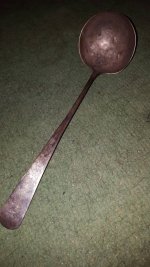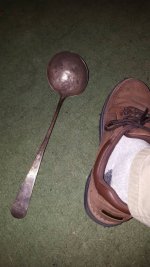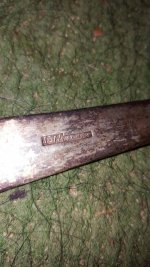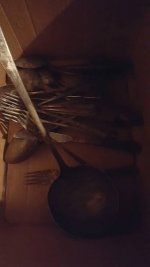Dirtdiglr
Jr. Member
Found a ladle today at yardsale. There is a manufacturers mark? I.Wescoat under the handle but no hallmarks or sterling?
The only thing that I can find is a listing on Cristie's for a set of flatware stating early 19th century. Any info to identify maker and background. And if this bugger has any value in rarity or melt value.
Thanks for looking.
Oh and I found this in the mix of alot, about 2 pounds of antique silver flatware with russian and other nationals.
The only thing that I can find is a listing on Cristie's for a set of flatware stating early 19th century. Any info to identify maker and background. And if this bugger has any value in rarity or melt value.
Thanks for looking.
Oh and I found this in the mix of alot, about 2 pounds of antique silver flatware with russian and other nationals.







